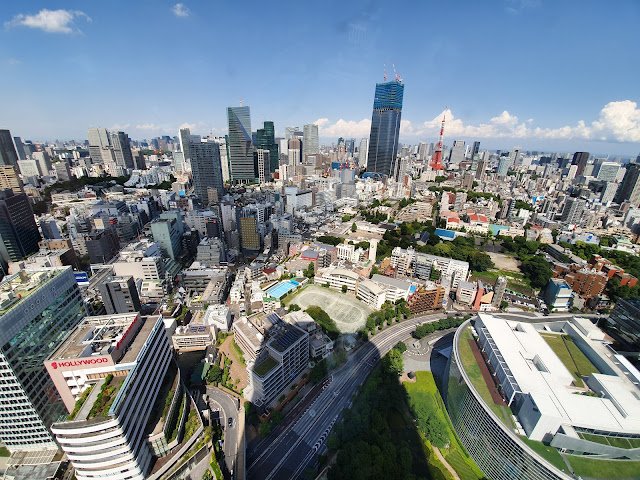Named the Mori JP
Tower, this architectural marvel surpasses Osaka's Abeno Harukas building,
previously the tallest at 984 feet. Situated in the redeveloped Azabudai Hills
area northwest of Tokyo Tower in Minato Ward, the entire region will also
welcome visitors on the same November day. Comprising three towering structures
within an expansive 871,000 square foot space, the development also boasts an
impressive 258,000 square feet of lush greenery, including a generous 65,000
square foot central plaza.
The Mori JP Tower
boasts an impressive 64 stories above ground, accompanied by five basement
floors, housing a harmonious blend of offices, residences, medical facilities,
and an international school. The additional two high-rise buildings will cater
to residences and a hotel, along with various other amenities. This strategic
endeavor aims to cultivate an inviting atmosphere for foreign executives and
affluent individuals, with the ultimate goal of attracting investments into
Japan's thriving economy.
During an exclusive
preview for the press on August 8th, Mori Building President Shingo Tsuji stated,
"Diverse functionalities converge within this compact space. We aspire to
witness a broad spectrum of visitors embracing this area, with hopes that it
will evolve into a community welcoming around 30 million people annually."
In the heart of
Tokyo, a new era of architectural excellence awaits those with a discerning eye
for innovation and grandeur. Japan's latest masterpiece, the Mori JP Tower,
stands tall as a testament to human ingenuity and ambition, redefining the
city's skyline at an astonishing height of 1082 feet. This monumental
achievement, set to open its doors on November 24th, promises an unparalleled
experience for designers, architects, developers, real estate investors, and
tourists alike.
This awe-inspiring
endeavor not only reshapes the city's skyline but also crafts a dynamic
community poised to welcome an estimated 30 million visitors annually. With a
rich history dating back to 1989, this $4.4 billion project stands as a
testament to Japan's unwavering commitment to progress and visionary urban
development. As the tower's doors swing open, a world of limitless
possibilities beckons, inviting you to be a part of a legacy that seamlessly
intertwines art, architecture, and innovation.
Related Articles:
Unveiling Tokyo's New Jewel: Japan's Tallest Skyscraper Soars at 1082 Feet
Shimizu's Innovative Architectural AI Creates Swift Green Tech Buildings




Comments
Post a Comment